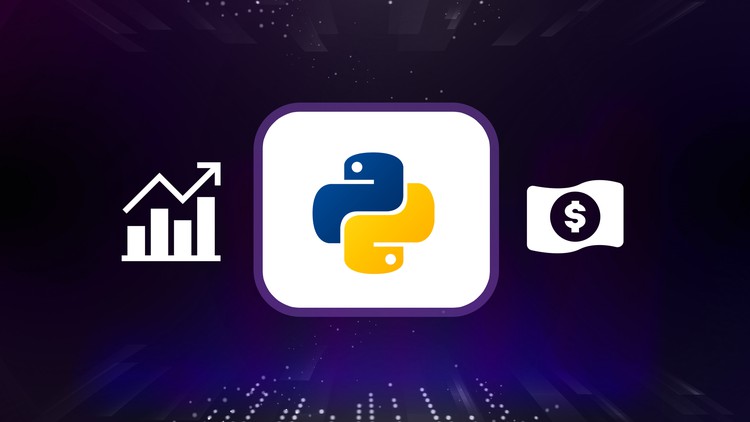Basic Finance with Python

Why take this course?
🚀 Course Title: Basic Finance with Python
🎓 Course Headline: Dive into Financial Analytics with Python!
Unlock the Secrets of Finance Through Code with Sean McOwen!
🎉 Course Description:
Are you intrigued by the world of finance but find it overwhelming? Or are you a Python enthusiast looking to expand your skill set into the realm of financial analytics? Basic Finance with Python is here to bridge the gap between coding and capital markets!
This course offers a unique 'learning by doing' approach, where you'll not only enhance your Python programming skills but also gain a solid grasp of financial concepts. We'll dive into the mechanics of financial models using real-world examples and Python code. Through interactive Jupyter notebooks, you'll learn to calculate compound interest, compute present values, analyze annuities, and much more.
By the end of this course, you'll be able to:
- 📊 Understand Compound Interest: Learn how it can significantly impact your investments over time.
- 💰 Calculate Present Value: Master the art of valuing future cash flows at their present value.
- ✍️ Analyze Annuities and Perpetuities: Discover the complexities of valuing annuity and perpetual payment streams.
- 🏐 Evaluate Bond Cash Flows: Gain insights into the intricacies of bond valuation.
- 📈 Apply the Dividend Discount Model (DDM): Learn how to value a company's stock based on its expected dividends.
- 🎢 Measure and Manage Risk: Understand how risk is quantified in finance and how diversification can mitigate it.
- 📚 Understand the Capital Asset Pricing Model (CAPM): Explore how this model helps investors determine the expected return on investment.
Whether you're a finance professional looking to automate your financial analysis, or a Python programmer eager to apply your skills in finance, this course is designed for you!
📅 Course Structure:
- Compound Interest: Explore the mathematics of compound interest and its significance in personal and corporate finance.
- Present Value: Learn various methods to compute the present value of cash flows, including annuities and loans.
- Annuities & Perpetuities: Dive into the valuation of fixed income investments through annuities and understand the theoretical and practical application of perpetuities.
- Bonds: Understand how to model bond cash flows and evaluate the time value of money in bond pricing.
- Dividend Discount Model (DDM): Analyze the relationship between stock prices, expected future dividends, and the risk associated with the stock.
- Risk: Explore different measures of financial risk and strategies to manage and mitigate it.
- Capital Asset Pricing Model (CAPM): Learn how to apply CAPM to assess the expected return for stocks considering market risk and company-specific risk factors.
🧮 What You'll Gain:
- A deep understanding of key financial concepts through Python programming exercises.
- Practical experience with Python and Jupyter notebooks to solve real-world financial problems.
- Enhanced analytical skills that are highly valuable in both finance and programming roles.
👨💻 Who is this for?
This course is ideal for:
- Aspiring financial analysts looking to master Python in finance.
- Python developers aiming to expand their skill set to include financial analytics.
- Entrepreneurs and investors who want to make more informed decisions using financial models.
Join us on this exciting journey to combine the power of Python with the principles of finance! Enroll in "Basic Finance with Python" today and unlock a world of financial knowledge and coding proficiency. 🚀💼💻
Loading charts...